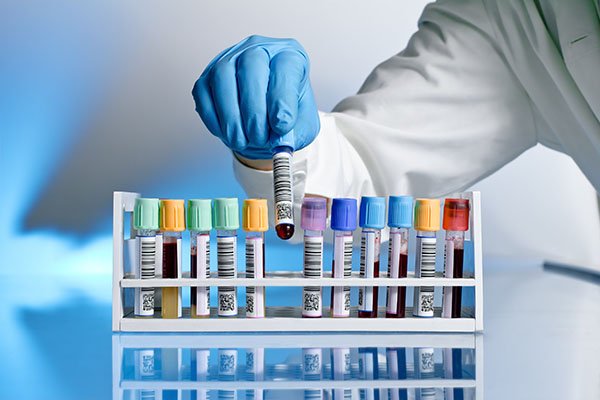Improving Pediatric Phlebotomy Practices in US Hospitals
Summary
- Hospitals in the United States are prioritizing pediatric patients' access to appropriate and reliable Phlebotomy Equipment and supplies.
- Ensuring the availability of specialized pediatric Phlebotomy Equipment is crucial for accurate and efficient blood sample collection.
- Regular evaluation, maintenance, and training on the proper use of Phlebotomy Equipment help hospitals meet the unique needs of pediatric patients.
Phlebotomy, the practice of drawing blood from patients for various medical tests, is a common and crucial procedure in hospitals. For pediatric patients, accurate and efficient blood sample collection is essential for diagnosis, treatment, and monitoring of their health conditions. To ensure that pediatric patients have access to appropriate and reliable Phlebotomy Equipment and supplies, hospitals in the United States are taking proactive measures to meet their unique needs.
Specialized Pediatric Phlebotomy Equipment
One of the key considerations for hospitals when it comes to Pediatric Phlebotomy is the availability of specialized equipment designed specifically for children. Pediatric patients have smaller veins and may require smaller needles and syringes for blood collection. Additionally, pediatric-friendly tourniquets, lancets, and collection tubes are essential to ensure a comfortable and successful blood draw experience for young patients.
Some common types of specialized pediatric Phlebotomy Equipment and supplies include:
- Butterfly needles: These small and flexible needles are ideal for pediatric patients' delicate veins.
- Pediatric tourniquets: Smaller in size and gentler on children's skin, these tourniquets help with vein visibility and blood flow.
- Pediatric lancets: Designed for a less painful skin puncture, pediatric lancets are essential for obtaining blood samples from children.
- Child-friendly collection tubes: These smaller tubes reduce the volume of blood needed for tests and come in colorful designs to distract and comfort young patients.
Regular Evaluation and Maintenance
Ensuring the reliability and accuracy of pediatric Phlebotomy Equipment and supplies requires hospitals to conduct regular evaluations and maintenance checks. This proactive approach helps identify any issues with equipment performance or quality before they affect patient care. By implementing routine inspections and servicing of Phlebotomy Equipment, hospitals can minimize downtime, prevent malfunctions, and maintain a safe environment for pediatric patients.
Key steps in the regular evaluation and maintenance of pediatric Phlebotomy Equipment include:
- Calibration checks: Regular calibration of Phlebotomy Equipment such as blood pressure monitors and scales ensures accurate readings for pediatric patients.
- Quality Control measures: Hospitals should establish protocols for monitoring the quality and performance of phlebotomy supplies, such as needles and tubes, to ensure consistency and reliability.
- Inventory management: Keeping track of inventory levels and expiration dates of phlebotomy supplies helps hospitals maintain a sufficient supply of equipment for pediatric patients.
- Staff training: Providing ongoing training on the proper use and maintenance of Phlebotomy Equipment ensures that healthcare professionals can use the tools effectively and safely.
Training on Pediatric Phlebotomy Techniques
In addition to having access to specialized equipment and maintaining its reliability, healthcare professionals must be well-trained in Pediatric Phlebotomy techniques to provide high-quality care to young patients. The unique challenges of drawing blood from children, such as their smaller veins, fear of needles, and inability to stay still, require specialized skills and knowledge to ensure a successful blood draw.
Training on Pediatric Phlebotomy techniques may include:
- Child-friendly communication: Healthcare professionals should use age-appropriate language and strategies to explain the procedure to pediatric patients and alleviate their fears and anxieties.
- Behavior management techniques: Hospitals may train staff in techniques to calm and distract young patients during phlebotomy procedures, such as using toys, videos, or games.
- Vascular access skills: Healthcare professionals should be proficient in identifying and accessing suitable veins in pediatric patients for blood collection, minimizing discomfort and complications.
- Ethical considerations: Training on the ethical and legal aspects of Pediatric Phlebotomy, such as consent and privacy issues, helps ensure that healthcare professionals adhere to best practices and Regulations.
By investing in staff training and education on Pediatric Phlebotomy techniques, hospitals can improve the quality of care and experience for pediatric patients, leading to better outcomes and Patient Satisfaction.
Conclusion
Ensuring that pediatric patients have access to appropriate and reliable Phlebotomy Equipment and supplies is a priority for hospitals in the United States. By offering specialized pediatric Phlebotomy Equipment, conducting regular evaluations and maintenance checks, and providing training on Pediatric Phlebotomy techniques, healthcare facilities can meet the unique needs of young patients and deliver high-quality care. Investing in pediatric Phlebotomy Equipment and supplies ultimately contributes to better patient outcomes, improved patient experience, and overall healthcare quality for pediatric populations.

Disclaimer: The content provided on this blog is for informational purposes only, reflecting the personal opinions and insights of the author(s) on the topics. The information provided should not be used for diagnosing or treating a health problem or disease, and those seeking personal medical advice should consult with a licensed physician. Always seek the advice of your doctor or other qualified health provider regarding a medical condition. Never disregard professional medical advice or delay in seeking it because of something you have read on this website. If you think you may have a medical emergency, call 911 or go to the nearest emergency room immediately. No physician-patient relationship is created by this web site or its use. No contributors to this web site make any representations, express or implied, with respect to the information provided herein or to its use. While we strive to share accurate and up-to-date information, we cannot guarantee the completeness, reliability, or accuracy of the content. The blog may also include links to external websites and resources for the convenience of our readers. Please note that linking to other sites does not imply endorsement of their content, practices, or services by us. Readers should use their discretion and judgment while exploring any external links and resources mentioned on this blog.
